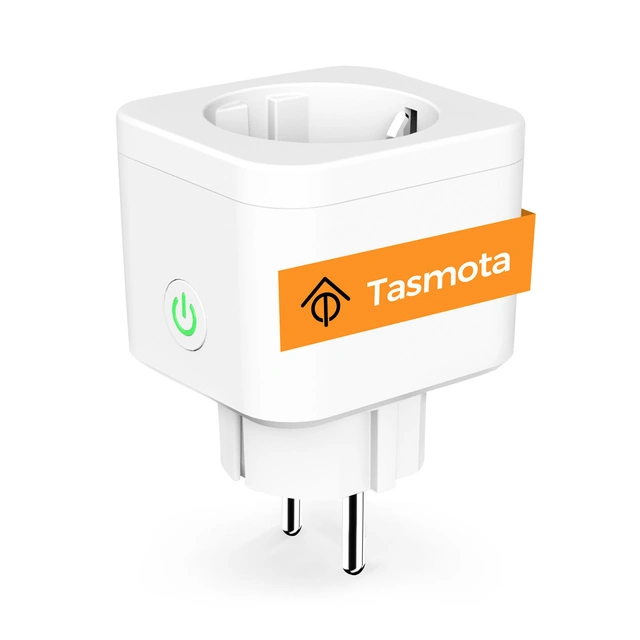Refoss P11 Power Monitoring Plug

GPIO Pinout
| Pin | Function |
|---|---|
| GPIO00 | None |
| GPIO01 | None |
| GPIO02 | None |
| GPIO03 | CSE7766 Rx |
| GPIO04 | LedLinki |
| GPIO05 | Button 1 |
| GPIO09 | None |
| GPIO10 | None |
| GPIO12 | Led_i 1 |
| GPIO13 | Relay 1 |
| GPIO14 | None |
| GPIO15 | None |
| GPIO16 | None |
| GPIO17 | ADC Temp |
Configuration as relay with overpower and overtemperature protection
This is the original device documentation page when it is flashed with Tasmota: https://templates.blakadder.com/refoss_P11.html For accurate energy consumption measurements this device requires power monitoring calibration.
substitutions:
devicename: "refossp11plug1"
friendly_name: Refoss P11 Plug 1
device_description: Refoss P11 Power Monitoring Plug with button and RGB led.
esphome:
name: ${devicename}
comment: ${device_description}
esp8266:
board: esp01_1m
# Enable logging
logger:
baud_rate: 0
# Enable Home Assistant API
api:
encryption:
key: !secret p11smartplug1_api_key
ota:
password: !secret p11smartplug1_ota_password
wifi:
ssid: !secret wifi_ssid
password: !secret wifi_password
# Enable fallback hotspot (captive portal) in case wifi connection fails
ap:
ssid: !secret p11smartplug1_ap_ssid
password: !secret p11smartplug1_ap_password
captive_portal:
web_server:
port: 80
# Time used for daily KWh usage
time:
- platform: homeassistant
id: homeassistant_time
status_led:
pin:
number: GPIO4
inverted: yes
binary_sensor:
# Button 1 configuration
- id: button_1
platform: gpio
pin:
number: GPIO05
on_press:
then:
- switch.toggle: relay_1
# Uncomment and test if you would like your device to reset on long press
# on_click:
# min_length: 5000ms
# max_length: 10000ms
# then:
# - switch.turn_on: reset
- platform: status
name: "${friendly_name} Status"
text_sensor:
# Reports the ESPHome Version with compile date
- platform: version
name: ${friendly_name} ESPHome Version
switch:
# Set relays as switches
- id: relay_1
platform: gpio
pin: GPIO13
icon: mdi:power-socket-fr
name: "${friendly_name} Switch"
# Edit below line based on what default behaviour you want after power outage
restore_mode: RESTORE_DEFAULT_OFF
on_turn_on:
- switch.turn_on: sw_led1
on_turn_off:
- switch.turn_off: sw_led1
# Register LED on GPIO
- id: sw_led1
platform: gpio
pin:
number: GPIO12
inverted: yes
# - platform: restart
# name: "${friendly_name} Restart"
# id: reset
uart:
id: cse7766_uart_bus
rx_pin: GPIO03
baud_rate: 4800
sensor:
- platform: cse7766 # https://esphome.io/components/sensor/cse7766.html
uart_id: cse7766_uart_bus
current:
name: "${friendly_name} Current"
unit_of_measurement: A
accuracy_decimals: 3
id: "${devicename}Current"
energy:
name: "${friendly_name} Energy"
id: "${devicename}Energy"
unit_of_measurement: Wh
power:
name: "${friendly_name} Power"
id: "${devicename}Power"
unit_of_measurement: W
filters:
- calibrate_linear:
- 0.0 -> 1.0
- 51.0 -> 97.0
voltage:
name: "${friendly_name} Voltage"
unit_of_measurement: V
id: "${devicename}Voltage"
# Uncomment and calibrate based on your device measurements
# filters:
# - calibrate_linear:
# - 0.0 -> 0.0
# - 127.0 -> 242.0
- platform: total_daily_energy
name: "${friendly_name} Total Daily Energy"
power_id: "${devicename}Power"
filters:
# Multiplication factor from W to kW is 0.001
- multiply: 0.001
unit_of_measurement: kWh
icon: mdi:clock-alert
- platform: uptime
name: "${friendly_name} Uptime"
icon: mdi:clock-outline
filters:
- lambda: return x / 60.0;
unit_of_measurement: minutes
- platform: wifi_signal
name: "${friendly_name} Wifi Signal"
update_interval: 60s
- platform: adc
name: ${friendly_name} Temperature
unit_of_measurement: "°C"
accuracy_decimals: 1
icon: "mdi:thermometer"
id: temp_analog_reading
pin: GPIO17
# Uncomment and calibrate based on your device measurements
# filters:
# - calibrate_linear:
# - 0.15 -> 18.6
# - 0.16 -> 19.8